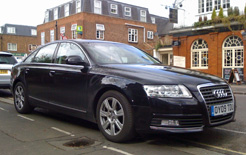
As the Special Report rehearses (Business cars are greener – but beware future tax traps), the strides inlowering CO2 emissions and improving fuel economy have been impressive.
But it’s often been pointed out to me by car makers that it doesn’t matter what we provide in terms of fuel efficient cars, it’s the driver behind the wheel that really make the crucial difference. Someone with a clog foot will ruin all the best car maker’s efforts.
The IAM’s director of policy and research, Neil Greig, told me as much: “Manufacturers should also take credit for producing models across the range that are cleaner and greener. But driving style is crucial – the best fuel-saver is a light right foot and anticipation of the road ahead.”
I couldn’t agree more. It’s surprising the difference it can make. On my Audi A6 2.0 TDIe, the average I get is just short of 43mpg. Yet on long journeys I can average more than the official figure of 53.3mpg. I think that’s exceptional for a large executive car.
It’s a bit of a different story on my wife’s Fiat 500. I know she has to drive lots of shorter journeys for her interior design business, but when we take it on 100+ mile trips you can get the fuel consumption to beyond 43mpg. I would like it to be higher but I suppose it’s not too bad considering the official figure is 55.4mpg.
So what can you do to help improve your mpg and cut carbon emissions? Neil Greig gave me these tips from the IAM to pass on to you:
Keep your vehicle moving rather than stopping and starting. Look further ahead and slow down earlier to avoid stopping. Driving at a constant speed is far more fuel efficient than heavy accelerating and braking.
Check your tyres. Under-inflated tyres have a big impact on fuel economy.
Put your car on a diet. Remove unnecessary weight, including roof racks, car clutter and heavy items in the boot.
Try to avoid using air conditioning and climate control at low speeds as they increase fuel consumption. Open a window.
However at high speeds, close your windows to maintain the aerodynamics of the car. Use air-con to get the car to a comfortable temperature, and then turn it off to save fuel.
Clean screens rarely mist up – so you’ll use the heater and air-conditioning less.
Try changing up your gears earlier; for petrol engines at 2,500 rpm (revs per minute), and diesel engines 2,000 rpm.
Reverse into parking bays: manoeuvring with a cold engine uses more fuel, so make the most of having a hot engine.
It will take most cars at least a couple of miles to warm up and run efficiently. Could you walk or cycle?
Drive at an even pace over speed humps. Slowing down and speeding up drinks more fuel.
Stick to the speed limit.
Editor’s blog on how to improve your car’s fuel consumption






